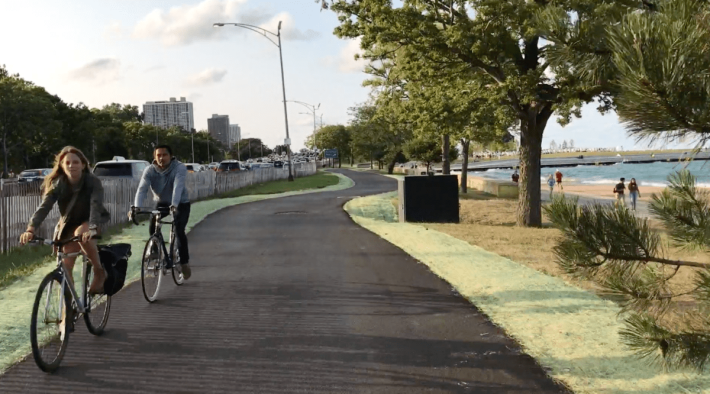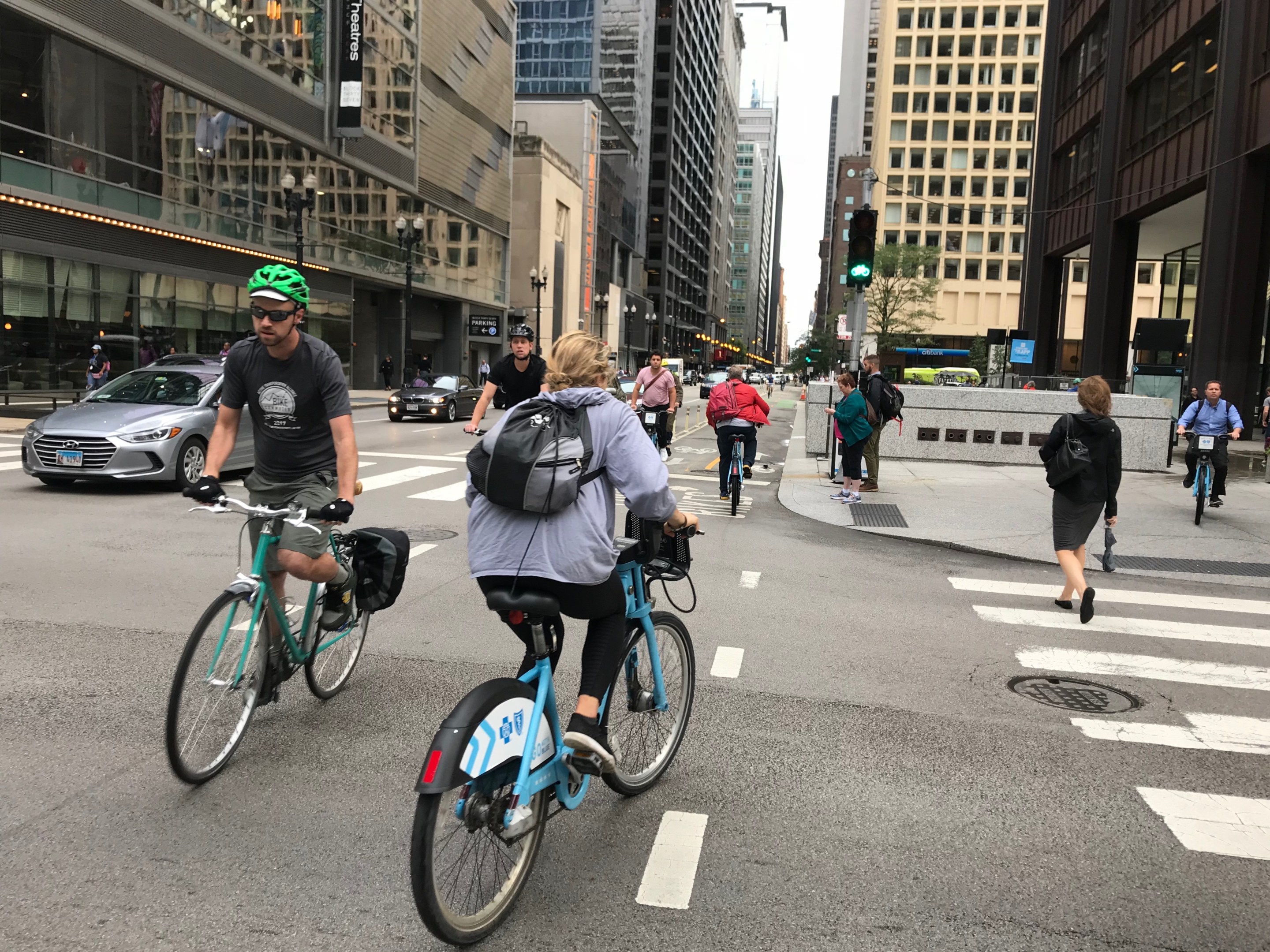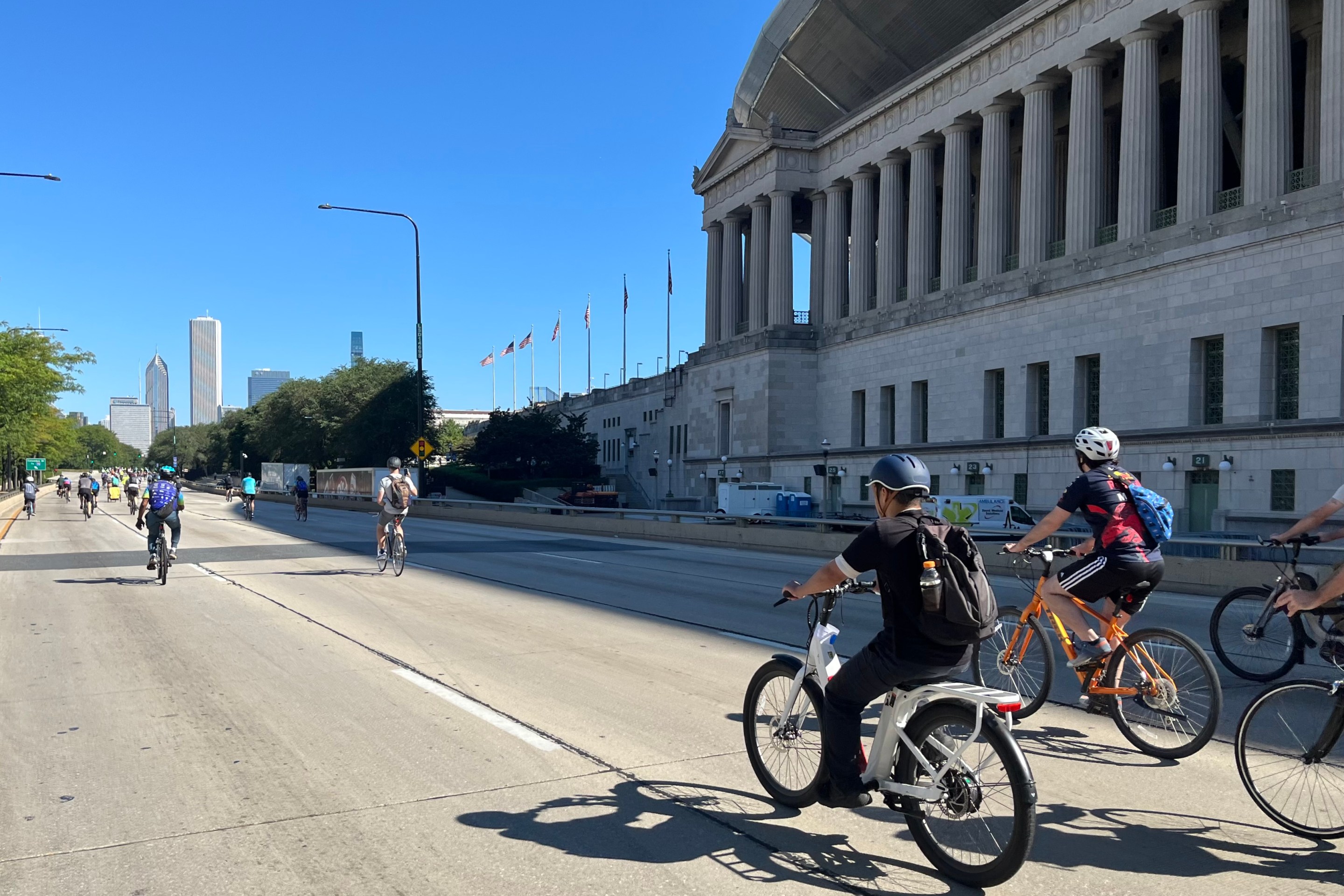Update 10/15/18: After this post was published pointing out that Bicycling Magazine's Chicago bikeway mileage figures were not in line with the city of Chicago's numbers, the magazine edited its numbers.
In September 2016, it was a bit of a head-scratcher when Bicycling Magazine rated Chicago the best U.S. city over 100,000 residents for biking in its biennial rankings.
Our bike mode share was a mere 1.7 percent of all trips to work, less than a quarter of Portland’s 7.2 percent mode share. While Chicago had built plenty of buffered and protected bike lanes, we didn’t have a cohesive, intuitive network of low-stress bikeways, in contrast with Minneapolis, where it was possible to bike from many neighborhoods to the central business district via off-street paths. Our conventional bike lanes were often clogged with illegally parked vehicles, torn up for utility work, or dangerously obstructed by construction projects. And then there was the fact that four people were fatally struck by allegedly reckless drivers while biking in Chicago over a roughly two-month period that summer.
When I interviewed him about the award, Bicycling editor Bill Strickland acknowledged the disconnect. “Objectively, Chicago is not really the nicest place to ride in the country,” he admitted. “But what we’re really looking for is the big, important metropolises that have made a huge change and are leading the way for other cities. We feel like Chicago is the most important cycling city right now.” As evidence his magazine cited recent accomplishments like the installation of over 100 miles of buffered and protected bike lanes during Mayor Rahm Emanuel’s first few years in office; the Divvy bike-share system, including the Divvy for Everyone equity program; and the construction of Big Marsh bike park. And the publication didn't even mention the opening of the Bloomingdale Trail.
Chicago has seen fewer major bike achievements over the past two years, while the negative aspects of riding here haven’t improved much. Therefore Bicycling has demoted our city to sixth place, which I’d argue is a more realistic rating. While in many respects Chicago is a good place to ride, I’m guessing many local cyclists would agree that it’s generally a less safe, convenient, and pleasant to pedal here than the peer cities that bested us this year. (Fort Collins has about 1/19 the population of Chicago, so it doesn't really count.) Here are the full top-ten rankings:
- Seattle
- San Francisco
- Fort Collins
- Minneapolis
- Portland
- Chicago
- Madison
- Eugene
- New York
- Cambridge
Bicycling largely blamed Chicago’s fall in the rankings on the city downshifting its efforts to install new bikeways. While the Chicago Department of Transportation raced to meet Emanuel’s goal of 100 miles of bike lanes in his first term, after that target was met the goal was lowered to only 50 miles for the next four years. The magazine did credit the city for installing more lanes with concrete protection in recent years.
In fairness, it looks like Bicycling sold the city short when it comes to new bikeway mileage. Although CDOT engineer Dave Smith provided the magazine with accurate numbers, these didn’t wind up in the final article, according to department spokesman Mike Claffey.
Bicycling stated that between 2016 and 2018 Chicago installed “just three” miles of protected lanes and 10 miles of buffered lanes, bringing the city’s total mileage of protected and buffered lanes and “off-path roadways” (whatever those are) to “over 150 miles.”
But according to Claffey, the installation numbers Smith provided for that period were actually 3.75 miles of new protected bike lanes, 2.5 miles of existing protected bike lanes upgraded with curbs, and 21 miles of new buffered bike lanes. He added that Chicago currently has 176 miles of protected bike lanes, buffered bike lanes, and off-street trails. On top of that, by the end of this year Chicago will have installed nine miles of neighborhood greenways since 2016.
Regardless of the numbers discrepancy, the spirit of Bicycling’s critique was correct: CDOT has installed fewer miles per year recently than during the first half of the Emanuel administration.

The magazine did Chicago credit for investing in bike infrastructure, partly via Divvy sponsorship revenue, including an “amazing” $53.5 million investment in 2018. We also got points for the Lakefront Trail separation project, probably the biggest thing to happen here for biking in the past two years.
But Chicago was rightly penalized for its relatively modest bike mode share, especially among women, which is significantly lower than all of the cities that were ranked higher than us this year. It’s also likely that the Chicago Police Department’s admitted practice of writing higher numbers of bike tickets in some Black and Latino neighborhoods as a pretext for searches hurt us in the rankings. While Bicycling didn’t explicitly state that, its explanation of the rating criteria noted, “Cities where riders reported feeling harassed by police over nuisance infractions were docked points.”
So in spite of the faulty bikeway mileage numbers (hey, nobody’s perfect), Bicycling’s current assessment of Chicago as, at best, the sixth-best city for biking, is on the money. After all, our city still lacks a cohesive bikeway network; bike routes are still often blocked by illegally parked vehicles and construction projects; reckless driving is still widespread; and drivers have killed six cyclists here so far this year, one more than in all of 2016. We’ve obviously still got a long way to go before Chicago is a truly bike-friendly city.
![]()
Did you appreciate this post? Consider making a donation through our PublicGood site.






